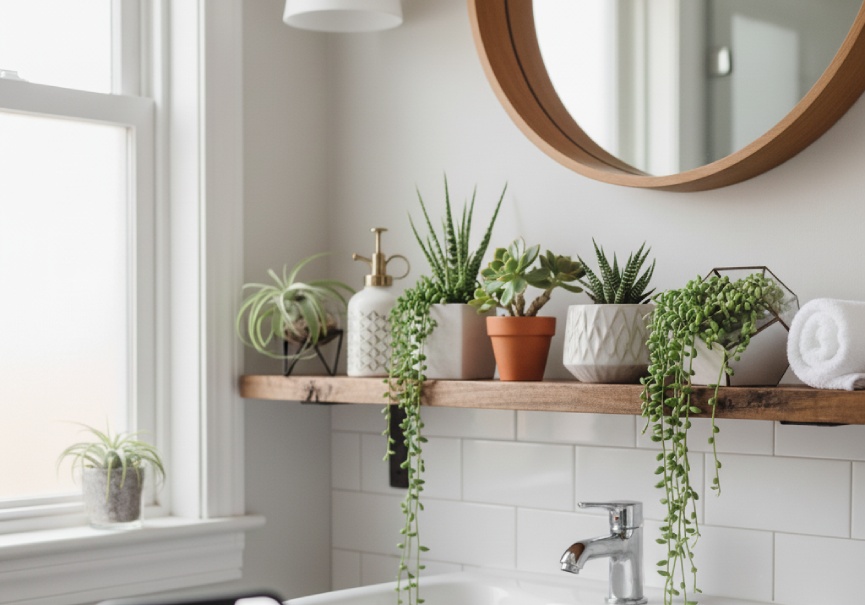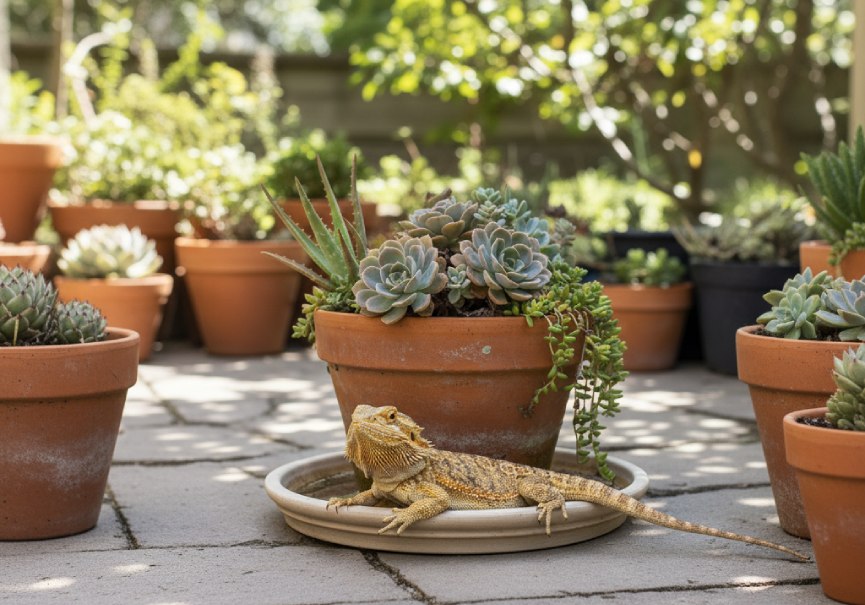Do Succulents Need Drainage? Learn How to Keep Your Succulents Happy and Healthy!

Introduction
Succulents are beloved by plant enthusiasts for their striking shapes, minimal care requirements, and ability to thrive in diverse environments. However, one of the most common questions plant owners ask is, Do succulents need drainage?
While succulents are resilient and adaptable, the presence (or absence) of proper drainage can make the difference between a thriving, vibrant plant and one that struggles or dies. Understanding how drainage affects succulents is essential to keeping them happy, healthy, and long-living.
In this detailed guide, we’ll explore why succulents need drainage, what happens without it, how to improve it, and practical tips to ensure your plants flourish whether indoors, outdoors, or in decorative containers.
Can Succulents Grow Without Drainage?
The short answer is yes, succulents can grow without drainage, but it’s not recommended.
Succulents are drought-tolerant plants adapted to dry, arid conditions. In their natural habitats, rainwater quickly drains through sandy or rocky soil, never lingering around the roots. Without similar drainage in pots or planters, succulents can easily suffer from root rot, suffocation, and nutrient imbalance.
Let’s understand why drainage is so critical for their health.
Why Do Succulents Need Drainage?
Succulents store water in their thick, fleshy leaves and stems, which allows them to survive long dry spells. But this adaptation also means they are vulnerable to overwatering. Proper drainage prevents excess moisture from suffocating the roots and helps maintain the oxygen balance within the soil.
A. Excess Water Can Cause Problems for Succulents
When water accumulates in the soil without an escape route, it creates a waterlogged environment. The roots, deprived of oxygen, begin to rot, a condition known as root rot.
Over time, this can cause:
- Soft, discolored leaves
- Foul odor from the soil
- Wilting or collapse of the entire plant
To avoid this, always use a well-draining soil mix and a pot with drainage holes.
A good succulent mix typically includes:
- Potting soil for nutrients
- Coarse sand for texture and air flow
- Perlite or pumice to improve drainage
When watering, remember the golden rule: “Water deeply, but infrequently.”
This means allowing the soil to dry out completely before watering again.
B. The Benefits of Good Drainage
Proper drainage doesn’t just prevent damage, it also enhances growth. Succulents with access to well-drained soil develop:
- Healthier root systems with better air circulation
- Improved nutrient uptake
- Longer lifespan and more vibrant colors
Moreover, well-drained soil helps mimic the succulents’ natural habitat, rocky, arid regions, encouraging the plants to thrive in a balanced environment.
What Happens If Succulents Don’t Have Drainage?
Growing succulents in containers without drainage can lead to several serious problems, including:
- Root Rot — The most common and fatal issue, caused by suffocated, oxygen-deprived roots.
- Soil Acidity — Excess water makes the soil acidic, affecting nutrient absorption.
- Salt and Mineral Buildup — As water evaporates, salts remain and accumulate, eventually poisoning the roots.
- Stunted Growth or Death — With damaged roots, succulents stop growing and may ultimately die.
Simply put, succulents without drainage are living on borrowed time.
The Role of Soil in Succulent Drainage
Soil is the foundation of good drainage. The type of soil you use determines how efficiently water moves through the pot.
Choosing the Right Soil Mix
Avoid using regular garden soil or heavy potting mixes they retain moisture and compact over time. Instead, opt for succulent-specific mixes or create your own blend.
Creating a Well-Draining Soil Blend
Here’s a DIY soil recipe you can try:
- 2 parts coarse sand or perlite
- 1 part potting soil
- 1 part pumice or crushed granite
For added nutrition, you can include a small amount of compost or coco coir. This mixture encourages water to flow freely while still holding minimal moisture for the roots.
Signs of Poor Drainage in Succulent Plants
Identifying poor drainage early can save your succulents. Watch out for these telltale signs:
- Yellowing leaves – Caused by nutrient loss and over-saturation.
- Soft or mushy leaves – A sign of rotting roots.
- Stunted or no growth – Oxygen-starved roots can’t function properly.
- Mold or fungus growth – Indicates the soil is too wet.
- Root rot – The roots turn brown or black and mushy.
If you spot these symptoms, it’s time to repot your succulent immediately in a well-draining soil and pot.
How to Improve Drainage for Succulent Plants
Improving drainage is easy and absolutely worth the effort. Let’s go step-by-step.
1. Choose the Right Soil
Use a well-draining succulent mix that includes inorganic materials like:
- Perlite
- Pumice
- Sand
- Small gravel
Avoid heavy, organic-rich soils like compost-only or clay-based mixes.
2. Add Amendments
If your soil retains too much moisture, mix in sand, perlite, or crushed gravel. These materials create air pockets that help water flow freely.
3. Check the pH
Succulents prefer a pH between 6.0 and 7.5. Use a simple soil test kit to ensure the pH stays balanced.
4. Consider Your Climate
In humid or rainy regions, succulents need extra drainage. Use more gritty components and less organic matter to prevent moisture retention.
Improve Drainage by Adding Drainage Holes to Pots
Drainage holes are a must for any succulent pot. If your favorite decorative pot doesn’t have them, you can easily add some!
Why Drainage Holes Matter
- Prevents overwatering and waterlogging
- Improves oxygen flow to roots
- Reduces the risk of fungal diseases
How to Add Drainage Holes
- Select the right pot — Ensure it’s suitable for the plant’s size and material.
- Gather tools — A drill and bit designed for the pot’s material (ceramic, plastic, etc.).
- Mark spots — Evenly space 2–4 holes at the bottom.
- Drill carefully — Avoid cracking by using light pressure.
- Clean up — Remove any dust or debris before planting.
You can also place a nursery pot inside your decorative one to enjoy both functionality and style.
Techniques for Better Drainage in Succulent Pots
Here are simple yet effective techniques to ensure lasting drainage success:
- Use a pot with holes — Always.
- Add a drainage layer — Small pebbles, lava rocks, or broken pottery at the bottom.
- Avoid water trays — Standing water in saucers can re-saturate the soil.
- Water smartly — Deep, infrequent watering works best.
- Elevate pots slightly — Use pot feet or small stands to improve air circulation below the pot.
Common Mistakes in Succulent Drainage
Even experienced gardeners make drainage mistakes. Avoid these:
1. Using Improper Containers
A container without drainage holes traps water, leading to root rot. If your pot doesn’t have holes, use it as an outer decorative layer only.
2. Neglecting Drainage Holes
Clogged holes can be just as bad as no holes. Regularly check and clear them to keep water flowing.
DIY Succulent Potting Mix Recipes for Perfect Drainage
Recipe 1: Classic Succulent Mix
- 2 parts coarse sand or perlite
- 1 part potting soil
- 1 part pumice or crushed granite
Perfect for most indoor succulents, airy, light, and fast-draining.
Recipe 2: Gritty Mix for Advanced Growers
- 1 part coarse sand
- 1 part perlite
- 1 part crushed granite or turf
- 1 part pine bark fines or coco coir
This mix ensures ultra-fast drainage and mimics the natural desert soil perfectly.
Conclusion
So, do succulents need drainage? Absolutely yes!
Drainage isn’t just helpful; it’s vital for your plant’s survival. Without it, succulents face root rot, suffocation, and stunted growth.
By using well-draining soil, pots with holes, and smart watering practices, you recreate the conditions succulents love: dry roots, airy soil, and just enough moisture to flourish.
Give your succulents the drainage they deserve, and they’ll reward you with healthy roots, vibrant colors, and long-lasting beauty.
FAQs
1: Do succulents need drainage? Ans:- Yes! Succulents need proper drainage to prevent root rot and maintain healthy growth.
2: Can succulents grow without drainage? Ans:- Technically yes, but it’s not ideal. Without drainage, water builds up and suffocates roots.
3: Why do succulents need drainage? Ans:- Drainage keeps the soil from staying too wet, prevents rot, and replicates their natural desert environment.
4: What happens if succulents don’t have drainage? Ans:- They may develop root rot, nutrient imbalance, and eventually die from overwatering.
5: What are the signs of poor drainage? Ans:- Yellowing or mushy leaves, stunted growth, mold, and foul-smelling soil are all warning signs.






